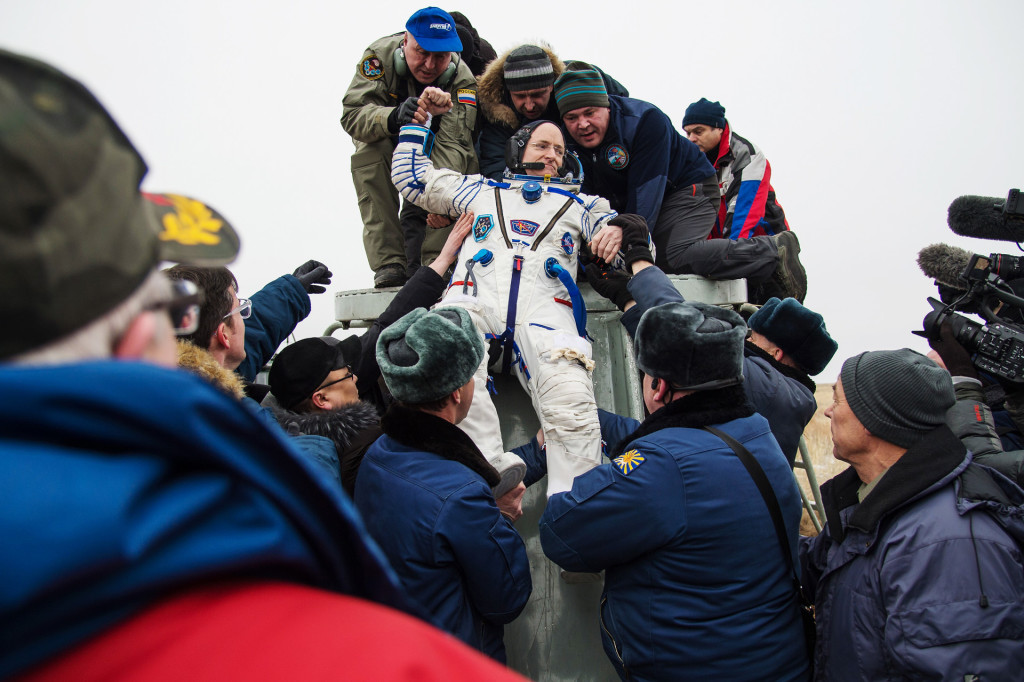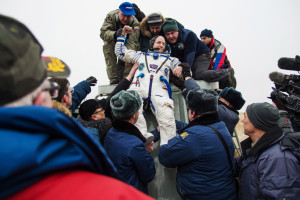by Dr. John Holdren and Charles Bolden
On Tuesday, March 1, 2016, Commander Scott Kelly returned home from the International Space Station after twelve months working off the Earth, for the Earth. His year in space will pay scientific and medical dividends for years to come, helping pave the way for future astronauts to travel to Mars and beyond.
The goal of sending American astronauts to Mars in the 2030s, which President Obama announced at the Kennedy Space Center in Florida in April 2010, is increasingly widely accepted as a “must do”—the logical next destination in the human exploration of space. Achieving that goal will not be possible without the kinds of insights about the physiology of long-duration spaceflight that NASA designed this mission to acquire.
The first human missions to Mars are likely to last about two and a half years. That means prolonged exposure to cosmic radiation and to weightlessness—with its direct physical effects on circulation, fluid distribution in the body, and musculature—as well as metabolic, microbial, and perhaps neurological changes. The willingness of Commander Kelly to sign up for a very closely monitored year in space (on top of his six months total time in orbit from his previous three missions as an astronaut) provided an extraordinary opportunity to increase our understanding of these effects and how to deal with them.
The opportunity was made all the more extraordinary because of the participation of Scott Kelly’s identical twin, Captain Mark Kelly, a former astronaut who has been closely monitored on Earth for the year Scott has been in orbit. This has provided an invaluable benchmark against which to measure the physiological changes that Scott experienced in space. Both twins will continue to be monitored for at least one year after Scott’s return.


